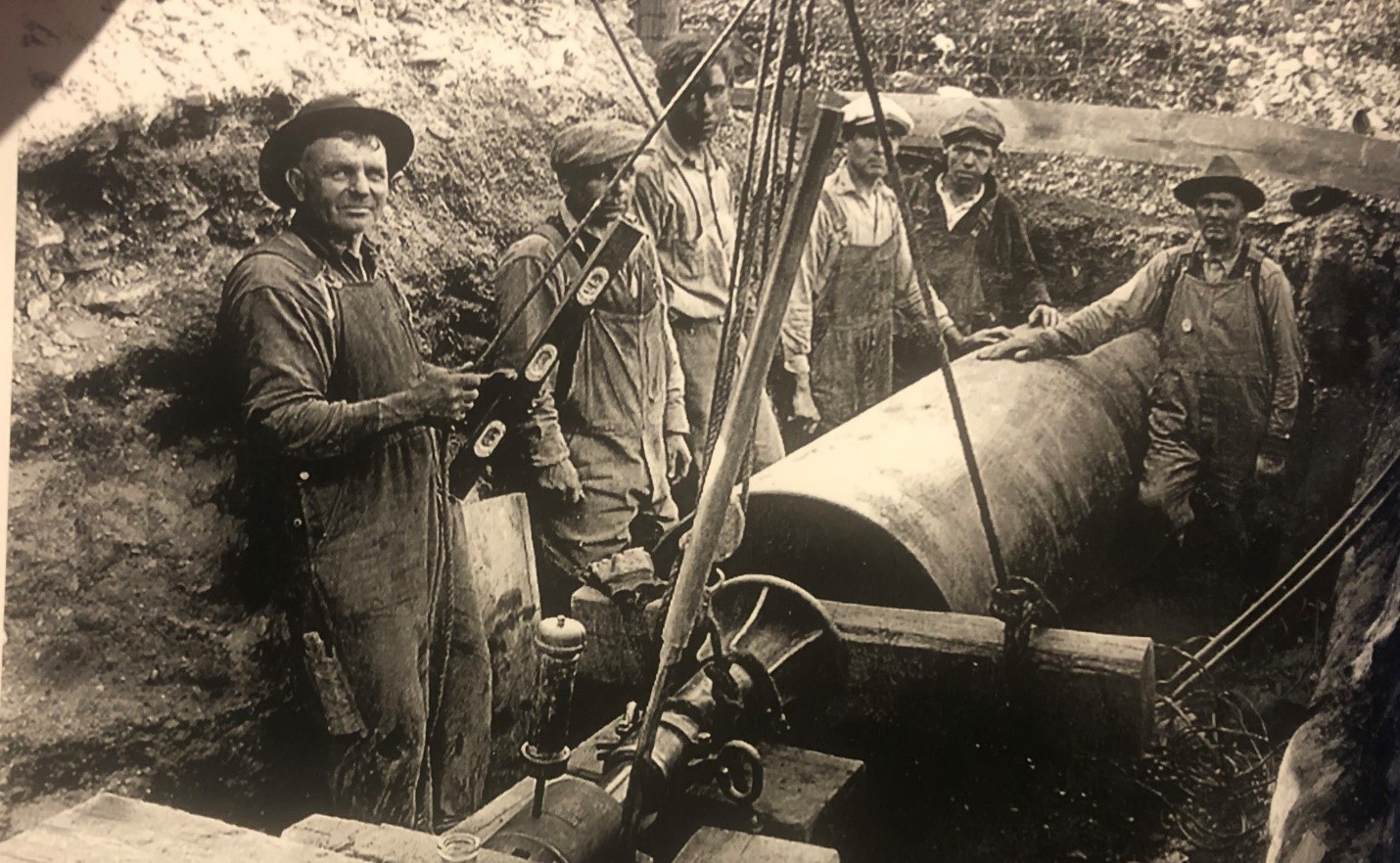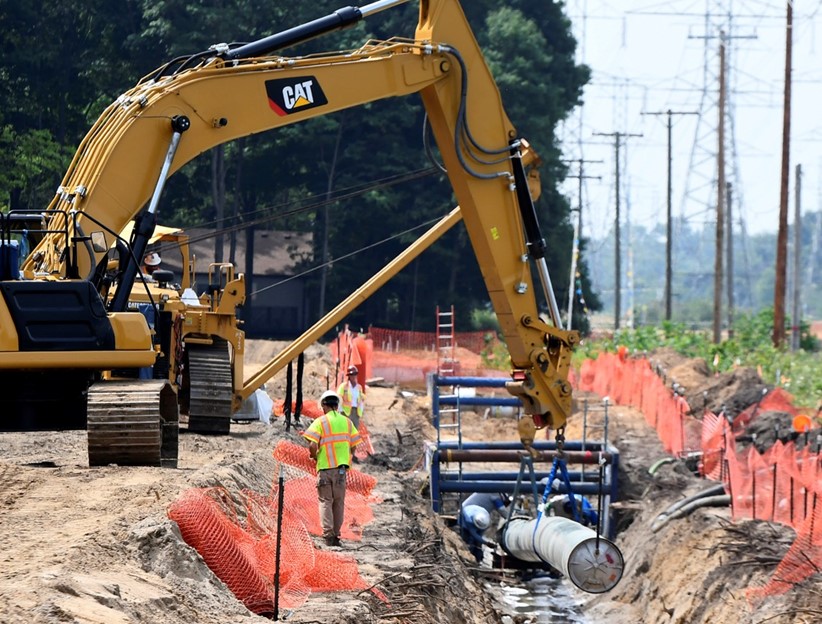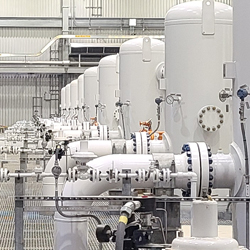There's Never an Off Season
Working Hard To Keep Michigan Natural Gas Heating Flowing to Homes This Winter and Beyond
While the year is winding down, our efforts to help heat your home with safe, reliable energy aren’t.
Teams across the state have been hard at work to make vital upgrades to our infrastructure so you never have to question whether your natural gas heating will be there when you need it.
We’re continuing to make improvements to strengthen and expand Michigan’s natural gas system too, so we can meet your energy needs for years to come while protecting the beautiful state we all call home.
Providing the energy our neighbors need to stay warm – all 350 million cubic feet – is year-round work and a mission we take pride in.
“There are a lot of people with a heart of service behind delivering natural gas,” said Clayton Tacey, mechanical engineer at Freedom Compressor Station in Washtenaw County, which helps push natural gas to customers across the state. “We take pride in what we’re doing and in serving our customers. We want to make sure when you turn up your thermostat on a cold day you don’t have to worry about whether the natural gas you need is going to be there.”
Where Does Natural Gas Come From?
Just like the fuel you use to power your car, much of the natural gas we use comes from outside Michigan. About half is pushed to us through an immense network of pipelines from places like the Gulf Coast, Texas and Kansas, with the other half coming from in-state sources.
Once here, transmission lines direct it to either a city gate, where it is then distributed to customers, or to our 15 underground natural gas storage systems.
We store natural gas in underground rock formations that are among the largest storage fields in the nation and can hold more than 300 billion cubic feet of capacity. These natural storage fields aren’t like any warehouse either. The porous rock helps hold natural gas a lot like a sponge holds water.
This vast storage system allows us to purchase large amounts of natural gas in the summer when prices are lowest and store it until demand increases in the colder months, which helps protect customers from higher market costs. Our preparation and planning are critical this winter when fuel prices are soaring around the world.
When stored gas is needed, huge compressors help pump it to city gates where the pressure is reduced so it can safely travel through distribution pipelines, through service lines and finally, to homes and businesses. Natural gas is also colorless and odorless, so odor is also added at city gates before gas enters local distribution systems to make it easier to sniff out a potential leak.
Our team regularly monitors real-time flow 24/7 and inspects our pipelines and other infrastructure year-round to ensure energy is delivered safely to Michigan communities.
Michigan Natural Gas Pipelines Made New
We’ve been proudly powering our communities for more than a century. While the years bring change and experience, they also bring aging infrastructure.

About 2,700 miles of our approximately 28,000 miles of distribution pipelines are made of vintage materials. That means they were constructed with cast iron, bare steel and/or copper, which were installed from the 1890s through the 1970s. These vintage pipelines and other aging facilities are undergoing upgrades to improve efficiency, reliability and safety.
Nearly a decade ago, we launched our Enhanced Infrastructure Replacement Program (EIRP), a large-scale effort expected to run through 2035 to replace 2,700 miles of natural gas distribution and service pipelines with more durable material.
More than 800 miles of pipeline have been replaced since the program began.
But that’s not the only work underway.
Our Natural Gas Delivery Plan will upgrade and enhance our transmission infrastructure, expand our compression and storage capacity, add new technology, improve efficiency and replace additional vintage pipelines.
These upgrades will further enhance the safety and reliability of the system, while also reducing emissions of greenhouse gasses.

The People Powering Our Communities
Getting natural gas to our 4.1 million customers in 45 counties across Michigan is no small feat. It includes about 2,000 team members committed to providing energy to our communities and keeping natural gas coursing through more than 30,000 miles of combined transmission and distribution pipeline.
“The safe and reliable delivery of natural gas to customers wouldn’t be possible without the efforts and dedication of many hardworking individuals,” said Jordan Waggener, who leads a team of six project engineers in Transmission Pipeline & Storage Engineering. “It is crews in the field, gas control, project engineers and designers and many others. There’s a lot of hands that make sure gas is delivered to your home safely.”
The team handles everything from shallow pipelines needing to be lowered or relocated to replacement of vintage pipelines within the transmission and storage system.
“When we replace vintage material or lower a shallow segment, we’re lowering the risk on the system,” Waggener said.
He noted that even when the team is not in the field supporting construction there’s still a lot to be done. “There’s never an off season,” he said. “We’re always working or planning for future improvements.”
 For Clayton Tacey, helping keep the energy flowing to homes, schools and businesses across Michigan means having an eagle-eye for detail.
For Clayton Tacey, helping keep the energy flowing to homes, schools and businesses across Michigan means having an eagle-eye for detail.
“Evaluations to ensure our equipment is going to be reliable when called upon is like doing a 100-point inspection on your vehicle,” Tacey said.
Except these aren’t your typical 100-point inspections. They’re careful reviews of complex systems that include Freedom Compressor Station’s five massive V-12 engines.
Freedom is one of eight compressor stations we maintain to deliver natural gas across the state. Together, the massive engines at all eight stations can run at nearly 150,000 horsepower.
“If we can be proactive, we can limit downtime and scope out work to make sure we have resources and planning in place to stay ahead of any potential issue,” Tacey said.
Freedom has been undergoing a major transformation as part of the Natural Gas Delivery Plan. Earlier this year we completed installation of five new compressor units at Freedom to safely transport natural gas to customers across the state. In addition to replacing aging equipment, the upgrades at Freedom have included new technology and enhancements to significantly limit emissions, light and sound pollution and water use. The facility can handle a greater volume of natural gas with incredible efficiency compared to the previous equipment from the 1940s and 50s.
“Someone from the outside looking in might just see a big new building, but it’s not apparent just how much has changed,” Tacey said. “Our goal with any project is to leave it better than we found it, and the Freedom upgrade project has accomplished that in all aspects.”
Part of that is also identifying problems before they start.
“If we can get to problems before they become problems, that’s better reliability,” said Ryan Savage, plant operator and mechanic at Freedom. “Being part of a crew that fixed a problem is worth it. When the work is done, it feels good to have it accomplished and meet the end goal of bringing stability to the system.”
Savage said when he started working in natural gas service at Freedom he went from “impressed to awestruck” at the scale and complexity of operations.
“It takes a huge group to make things run and make sure it runs well,” he said. “It’s a huge effort and it’s everyone doing their part and taking pride in what they do.”